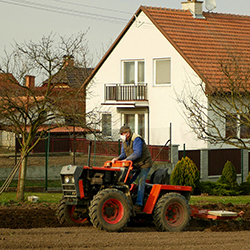By Marie Rosenthal, MS, and Ethan Covey
If you are still looking for a reason to exercise, a new study shows that exercise might help certain symptoms of long COVID. The COVID-19 vaccination disparities between cities and rural counties are increasing. More people in urban areas are vaccinated than those in rural ones. The Infectious Diseases Society of America took umbrage with Florida’s decision to recommend against vaccination of healthy kids against COVID-19. And we end with some good news: People with immunity to the original SARS-CoV-2 virus, whether through infection or vaccination, likely maintain some protection against omicron, and some antiretrovirals maintain their activity against omicron BA.2.
Exercise May Treat Long COVID–Induced Diabetes, Depression
While no medically recognized treatment exists for long COVID, exercise may break the vicious cycle of inflammation that can lead to developing diabetes and depression months after a person recovers from the virus (Exerc Sport Sci Rev 2022;50[2]:65-72).

“We know that long COVID causes depression, and we know that it can increase blood glucose levels to the point where people develop diabetic ketoacidosis, a potentially life-threatening condition,” said Candida Rebello, PhD, a research scientist at Pennington Biomedical Research Center, in Baton Rouge, La. “Exercise can help. Exercise takes care of the inflammation that leads to elevated blood glucose and the development and progression of diabetes and clinical depression.”
It's unclear how many people suffer from long COVID. But estimates range from 15% to 80% of people who were infected.
Long COVID causes many debilitating symptoms, according to the CDC, including brain fog, muscle pain and fatigue that can last for months after a person recovers from the initial infection, and any amount of exercise can be beneficial.
“You don’t have to run a mile or even walk a mile at a brisk pace,” Dr. Rebello said. “Walking slowly is also exercising. Ideally, you would do a 30-minute session of exercise. But if you can only do 15 minutes at a time, try to do two 15-minute sessions. If you can only walk 15 minutes once a day, do that. The important thing is to try. It doesn’t matter where you begin. You can gradually build up to the recommended level of exercise.”
COVID Vaccination Rates Far Lower in Rural Areas
The disparities of COVID-19 vaccination between rural counties compared with urban areas of the United States have increased more than twofold since April 2021, despite increased availability of, and access to, vaccines (MMWR Morb Mortal Wkly Rep 2022;71[9]:335-340).
“These findings illustrate there is more work to be done to increase COVID-19 vaccine uptake and acceptance in rural communities,” Ryan Saelee, PhD, a health scientist with the CDC, told Infectious Disease Special Edition.
The study focused on county-level vaccine administration data from Dec. 14, 2020, through Jan. 31, 2022, regarding people who were eligible for vaccination.

Overall, rural counties had lower rates of first vaccine receipt (58.5%), compared with urban counties (75.4%). Females and males were both less likely to have received vaccine doses in rural counties. And the trend continued across all age groups, with the largest difference among those aged 12 to 17 years, where there was a 26.2 percentage point difference between rural (38.7%) and urban (64.9%) areas.
Expression of vaccine hesitancy was significantly higher in rural areas as well. Among adults, those living in rural areas were nearly three times as likely to report that they “definitely won’t” get a COVID-19 vaccine; and parents in rural counties were twice as likely to state that their child will “definitely not” get a COVID-19 vaccine.
Since April 2021, the gap in COVID-19 vaccination coverage among rural and urban counties has more than doubled.
Dr. Saelee stressed the importance of working to overcome these disparities in vaccination.
“COVID-19 vaccines remain our best protection against serious illness, and continuing to expand vaccine coverage and address barriers to vaccination in rural areas is critical to help achieve vaccine equity, reduce disparities, and decrease COVID-19–related illness and death in the U.S.,” he said.
IDSA: Florida Is Putting Children in Harm’s Way With New Vaccination Policy
The Infectious Diseases Society of America strongly opposed the state of Florida’s decision to recommend against COVID-19 vaccination for healthy children, saying it “flies in the face of the best medical guidance and only serves to further sow distrust in vaccines that have proven to be the safest, most effective defense against severe COVID-19 disease, hospitalization and death.”
On March 7, State Surgeon General Joseph Ladapo, MD, PhD, said healthy children do not need to be vaccinated.

The FDA has authorized the vaccines in children as young as 5 years of age based on data showing it is highly effective at preventing hospitalizations and deaths in that age group.
“Pediatric vaccines are one of the great public health achievements of our time. They keep children from getting sick and dying from not only COVID-19 but also diseases such as measles, tetanus, whooping cough and rotavirus.
“Vaccinating eligible children against COVID-19 not only protects them, but it also protects their classmates, friends and vulnerable family members from a virus that has left nearly 1 million people in the United States dead in its two-year wake,” said Daniel P. McQuillen, MD, FIDSA, the president of the Infectious Diseases Society of America.
The American Academy of Pediatrics also endorses vaccination for children, according to Moira Szilagyi, MD, PhD, FAAP, the president of the American Academy of Pediatrics, and awaits the approval of vaccination for those younger than 5 years of age, she said.
“This month, we reported the highest number of COVID-19 cases among children since the pandemic’s onset. More than 3.5 million new cases in children were reported in January 2022 alone, and more than 11.4 million children and teens have been infected with COVID-19 over the past two years.
“It is important that all children can benefit from the protection that the vaccine offers. I encourage parents to bring any questions they have about the vaccine to their child’s pediatrician. Pediatricians are eager to have these conversations.”
Mutations Leading to Omicron Variant Did Not Enable Virus to Fully Escape Immune System
People who gained immunity—either through vaccination or exposure—against the original strain of SARS-CoV-2 also are likely to have some protection against the pathogen’s omicron variant. That’s because the mutations that led to the variant’s emergence aren’t found in the regions of the virus that stimulate one type of cellular immune response, according to an international research team from Johns Hopkins Medicine, in collaboration with the National Institute of Allergy and Infectious Diseases (NIAID) and ImmunoScape.
However, the researchers cautioned that their finding only relates to one type of cell-mediated immunity, and perhaps, it is the humoral immunity that fails when omicron causes breakthrough infections (mBio 2022 Mar 10. https://doi.org/10.1128/mbio.00099-22).
“We found in a January 2021 study that in people previously infected with the original COVID strain, specific epitopes [portions of a protein that elicit an immune response] from the virus are recognized by immune system cells known as CD8+ T lymphocytes, or killer T cells, and that this recognition enables a cell-mediated attack on COVID,” said study lead author Andrew Redd, PhD, an assistant professor of medicine at the Johns Hopkins University School of Medicine, in Baltimore, and a staff scientist at NIAID. “In our latest work, we found that these epitopes remained virtually untouched by the mutations found in the omicron variant. Therefore, the CD8+ T-cell response to omicron should be virtually as strong as it was to the initial form of SARS-CoV-2.”
Other research groups in the United States and South Africa have demonstrated similar results for people previously infected by or vaccinated against the original SARS-CoV-2 strain.
The CD8+ T cells used in the latest study were from blood samples collected in 2020 from 30 patients who had recovered from mild to moderate cases of COVID-19. The convalescent plasma donors had six human leukocyte antigens (cell-surface proteins that regulate the immune system and are part of each person’s genetic profile), Dr. Redd said, that are representative of greater than 73% of the U.S. population.
“This suggests that a significant portion of Americans who have been vaccinated against or exposed to the original strain of SARS-CoV-2 might have cytotoxic T cells that can produce an immune response to omicron,” said study senior author Aaron Tobian, MD, PhD, the director of the transfusion medicine division and a professor of pathology at Johns Hopkins.
The blood samples used in this study—initially acquired for the research team’s earlier study of immune response in patients who were convalescent—were taken from 26 to 62 days after the donors stopped having COVID-19 symptoms. This enabled the donors’ immune response to the virus to be fully mature and yield CD8+ T cells primed against it. The samples were stored after the researchers measured the T-cell response.
In the original analysis, the blood samples were probed with 408 different SARS-CoV-2 epitopes from spikes on the virus surface, from the virus capsule and from nonstructural proteins inside the virus. The researchers found that T cells from the convalescent donors recognized 52 of the 408 epitopes.
Dr. Redd said in the latest study, the researchers examined the 52 epitopes previously identified in the convalescent blood samples to determine whether they had been altered by escape mutations.
“We only found one low-prevalence epitope from the omicron spike protein that had a minor change from its predecessor in the original virus,” Dr. Redd said. “Overall, the omicron variant is known to have some 50-plus mutational differences between it and the original SARS-CoV-2 strain, but it seems the virus has not evolved the ability to avoid T-cell recognition.”
The Toolbox Against Omicron BA.2
The antiviral therapies remdesivir (Veklury, Gilead), molnupiravir (Merck) and the active ingredient in nirmatrelvir-ritonavir (Paxlovid, Pfizer) remain effective in laboratory tests against the omicron BA.2 subvariant of SARS-CoV-2, according to new research.
The BA.2 subvariant also remains susceptible to at least some of the monoclonal antibodies used to treat COVID-19, such as tixagevimab/cilgavimab (Evusheld, AstraZeneca), which were not able to neutralize the BA.2 virus at common dosages in lab tests. Other antibody treatments were less effective against BA.2 than they are against earlier strains of SARS-CoV-2 (N Engl J Med 2022 Mar 9. doi:10.1056/NEJMc2201933).
These results come from new research led by Yoshihiro Kawaoka, PhD, a virologist at the University of Wisconsin–Madison School of Veterinary Medicine and the University of Tokyo. The omicron BA.2 subvariant is related to the more common omicron BA.1 virus, and some evidence suggests that BA.2 can spread more quickly than the already highly contagious BA.1 subvariant.
“The bottom line is we have antibodies that appear to be more effective against BA.2 compared with BA.1 or BA.1.1. That’s good news, but we don’t know whether what we found in in the lab translates into clinical settings,” Dr. Kawaoka said.
In lab experiments using nonhuman primate cells, Dr. Kawaoka’s team tested seven monoclonal antibodies, three combinations of antibodies and three antiviral treatments against the BA.2 subvariant. Most clinically approved antibody treatments are a combination of multiple antibodies.
The IV drug remdesivir and the active ingredients in two anti–COVID-19 pills, nirmatrelvir-ritonavir and molnupiravir, were nearly as effective against BA.1 as they are against the original strain of SARS-CoV-2.
The most effective antibody treatment against the BA.2 subvariant was etesevimab-bamlanivimab. The antibodies sold by Regeneron and GlaxoSmithKline were much more effective against BA.2 than they are against the BA.1 omicron subvariant, although they were not as potent against BA.2 as they are against earlier versions of the virus.
Available anti–COVID-19 treatments are typically less effective against new variants than they are against the original virus strain, because they were designed and tested against earlier versions of the virus.
{RELATED-HORIZONTAL}
